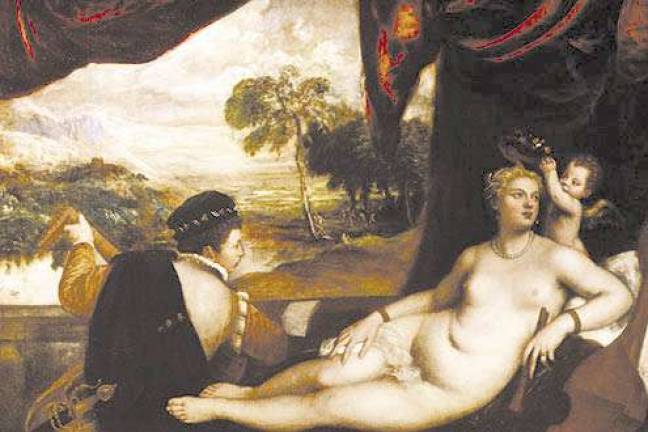Take the Grand Tour

Thrilling to the Met's merge of painting and music
By pairing Pachelbel's Canon in D with images of men and women struggling up a foggy mountainside in The Mystery of Kaspar Hauser, Werner Herzog created an unforgettable portrait of the eternity of human suffering. Its effectiveness drew from the interplay between music and image: the music supplied the eternity, transforming individual circumstance into universal condition, while the image conveyed the humanity behind the suffering. On September 17 and 18, a similar reverberation between sound and image was had on the Metropolitan Museum of Art's Grand Tour, which paired four live miniconcerts of early music with paintings from the same era. Audiences traveled among the reinstalled New European Paintings Galleries to hear Quicksilver, Tenet, Dark Horse Consort, and Jory Vinikour play madrigals and motets beside the great canvases of Tintoretto and Vermeer. The result offered not just esthetic but also visceral insight into both the music and the art.
For example, in the gallery of 16th-century Venetian paintings, where Venus clings to her mythological lover in Titian's Venus and Adonis, the luscious play of muscle beneath the goddess's back seemed to throb in human, not metaphorical, response to the amorous lament "Sweet nightingale, you call to your dear companion singing 'Come to me my love'" in Monteverdi's Dolcissimo Uscignolo. In gallery 634, among the Dutch paintings collected by New York department store magnate Benjamin Altman, sackbuts and cornettos rang out a soundtrack of the lives portrayed on the walls. "Do you understand me now?" Rembrandt's stern self-portrait seemed to be saying. ("Yes, I do!" I wanted to shout back.)
Special mention should be made of the Quicksilver ensemble, who played in the gallery displaying huge canvases of the Italian Baroque. Their evocation of the stile moderno, music "with no agenda but the imagination of the composer-and no standard form but the passionate give-and-take of friends in conversation," in the words of co-director Robert Mealy, resounded with singular fervor, as if the players had found the music of their souls.
On their website, the Met describes the Grand Tour as a once-in-a-lifetime opportunity. We hope not. The living presence of the musicians vivified the works of the great painters, while the paintings' physicality concretized the music's transitoriness. Both sound and image profited, but not nearly as much as the lucky audience who took the Grand Tour. Hopefully, the Met will provide this wonderful opportunity for more Grand Tourists to come.